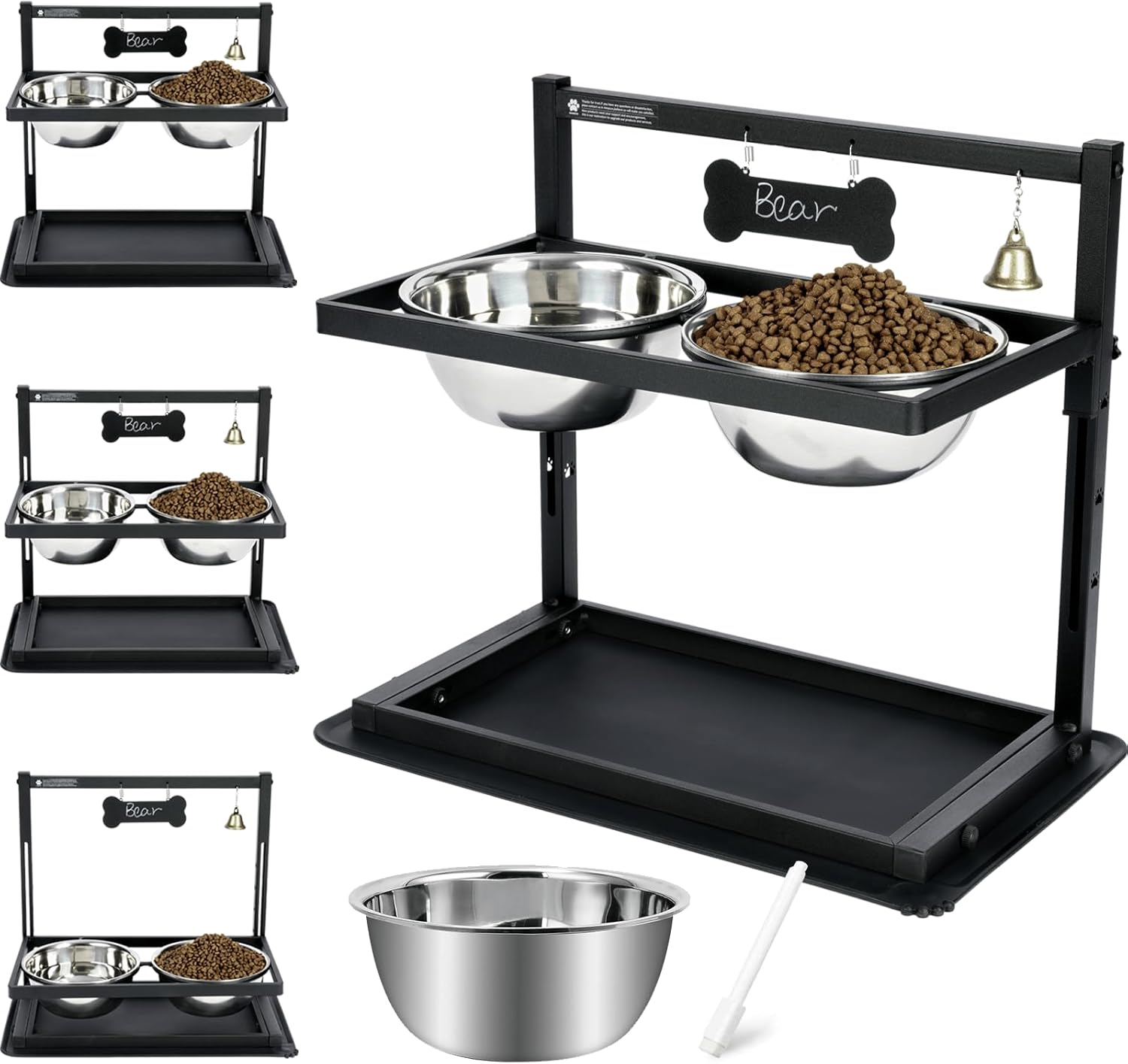Canine Arthritis: Causes, Symptoms, and Treatment Options
Introduction
Arthritis is a common condition in dogs, especially in older pets, that affects their joints and causes pain, stiffness, and a decrease in mobility. Just like humans, dogs can experience joint degeneration, leading to inflammation and discomfort. If your dog is experiencing stiffness or limping, they may be suffering from arthritis. Early detection and proper treatment are key to managing the condition and improving your dog’s quality of life. In this blog, we’ll cover the causes, symptoms, and treatment options for canine arthritis.
What Is Canine Arthritis?
Canine arthritis, also known as osteoarthritis or degenerative joint disease (DJD), is a condition where the cartilage in a dog’s joints wears down, leading to bone-on-bone friction. This friction causes inflammation, pain, and a reduced range of motion in the affected joints. Over time, arthritis can severely impact a dog’s ability to move, making everyday activities, such as walking, running, or even climbing stairs, challenging.
Causes of Arthritis in Dogs
Several factors can contribute to the development of arthritis in dogs:
1. Age
Older dogs are more likely to develop arthritis due to the natural wear and tear on their joints over time. Age-related arthritis, often seen in senior dogs, is typically a result of joint cartilage degeneration.
2. Genetics
Certain breeds are more predisposed to developing arthritis due to genetic factors. Large breeds like German Shepherds, Labradors, and Golden Retrievers are often more susceptible to joint issues, including hip and elbow dysplasia, which can lead to arthritis.
3. Injury or Trauma
Previous injuries, such as fractures, ligament tears, or dislocations, can damage the joints and lead to arthritis over time. Dogs that have undergone surgeries to repair joint damage are at a higher risk of developing arthritis later in life.
4. Obesity
Excess weight puts additional stress on your dog’s joints, which can contribute to the development of arthritis. Overweight dogs are more likely to experience joint degeneration and inflammation, especially in the hips, knees, and elbows.
5. Infections or Inflammatory Diseases
In some cases, infections or autoimmune conditions can affect the joints and lead to arthritis. These conditions may cause inflammation in the joints, accelerating cartilage breakdown.
Symptoms of Arthritis in Dogs
Arthritis can affect dogs in different ways, and symptoms may vary depending on the severity of the condition and which joints are affected. Common signs of arthritis in dogs include:
1. Limping or Lameness
If your dog is limping or showing signs of pain when walking, this may indicate arthritis. The limp is often more pronounced after exercise or when your dog is getting up from rest.
2. Stiffness or Difficulty Moving
Dogs with arthritis often experience stiffness in their joints, especially in the morning or after periods of inactivity. You may notice your dog taking longer to get up or move around.
3. Reduced Activity or Exercise
Arthritic dogs often avoid physical activities that they used to enjoy. They may be less eager to go for walks, run, or play with toys, as these activities can cause pain.
4. Favoring Certain Limbs
If arthritis affects only one leg or joint, your dog may start to favor that limb and put more weight on the other legs. This can lead to uneven wear on the other joints and cause secondary problems.
5. Behavioral Changes
Chronic pain can cause behavioral changes in your dog, such as irritability, decreased social interaction, or reluctance to be touched, particularly around the affected joints.
6. Swelling or Heat in the Joints
Swelling or heat around the affected joints is another common symptom of arthritis. You may notice that the joints appear larger or feel warmer to the touch, indicating inflammation.
7. Decreased Mobility
Arthritic dogs often have difficulty climbing stairs, jumping, or getting in and out of the car. The pain and stiffness in their joints limit their mobility, making these tasks more challenging.
Treatment Options for Canine Arthritis
Although arthritis is a progressive condition with no cure, there are several effective treatment options that can help manage your dog’s symptoms and improve their quality of life.
1. Medication
- Non-Steroidal Anti-Inflammatory Drugs (NSAIDs): These are the most commonly prescribed medications for arthritis in dogs. NSAIDs help reduce pain and inflammation in the joints. Your vet will prescribe a safe, dog-specific NSAID to manage your dog’s symptoms.
- Pain Relief Medications: In addition to NSAIDs, your vet may prescribe other pain relievers such as tramadol or gabapentin to help manage your dog’s discomfort.
- Joint Supplements: Supplements like glucosamine and chondroitin can support joint health and reduce inflammation. These are often recommended as part of a long-term arthritis management plan.
2. Physical Therapy and Rehabilitation
Physical therapy is a great way to improve mobility and reduce pain in dogs with arthritis. Techniques such as massage, stretching exercises, and water therapy can help improve joint function, flexibility, and strength. A professional canine physical therapist can create a tailored rehabilitation plan for your dog.
3. Weight Management
Maintaining a healthy weight is crucial for dogs with arthritis. Reducing the amount of pressure on the joints can help decrease pain and slow the progression of arthritis. A balanced diet and regular exercise (as tolerated by your dog) can help manage your dog’s weight and support joint health.
4. Surgical Options
In severe cases of arthritis, surgery may be recommended to alleviate pain and improve joint function. Surgical options include joint replacement (such as hip or knee replacement), joint fusion, or arthroscopy (minimally invasive surgery to clean up the joint). Your vet will assess your dog’s condition to determine if surgery is an appropriate option.
5. Alternative Therapies
Alternative treatments, such as acupuncture or laser therapy, can help relieve pain and inflammation associated with arthritis. These therapies work by promoting blood flow, reducing inflammation, and stimulating healing within the affected joints.
6. Environmental Modifications
Making changes to your home can help your dog navigate their environment more easily. For example, using ramps to help your dog get in and out of the car or onto the couch can reduce strain on their joints. Providing a comfortable, soft bed will also help alleviate pressure on their joints when resting.
Preventing Arthritis in Dogs
While some factors like genetics and age cannot be avoided, there are steps you can take to reduce your dog’s risk of developing arthritis:
- Maintain a healthy weightto avoid excess strain on the joints.
- Provide regular exerciseto keep your dog’s muscles strong and joints flexible.
- Avoid injuryby providing a safe environment for your dog to move and play.
- Early intervention: If your dog experiences joint injuries or other joint-related issues, seek prompt veterinary care to minimize the risk of developing arthritis.
Conclusion
Arthritis is a common and often painful condition that can affect your dog’s quality of life, but with early diagnosis and appropriate treatment, you can help manage the symptoms and improve their mobility. If you notice any signs of arthritis in your dog, it’s important to consult your veterinarian for a proper diagnosis and treatment plan. With the right approach, your dog can continue to lead an active, happy life despite the challenges of arthritis.
Affiliate Products



